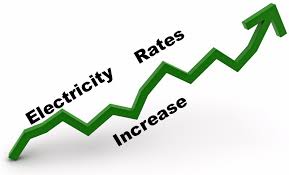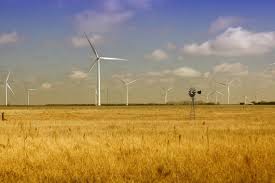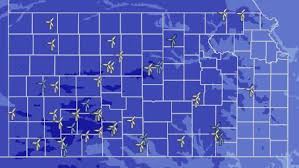
A new analysis of energy costs in Kansas suggests Kansas consumers are paying more for electricity than their neighbors in Oklahoma and other states because of the state investments in coal and wind power. In short, alternative energy costs money and consumers are paying for it with higher bills.
The analysis by the Kansas Corporation Commission was released during two days of hearings held by the State Senate Utilities Committee. The results have the attention of legislators.
According to a report by the Wichita Eagle, the state’s major utilities spent billions over the past several years to build or retrofit coal-fired power plants in order to meet new federal emissions standards. And those costs have been passed along to consumers. Westar Energy and Kansas City Power and Light were among those utilities.

They also spent hundreds of millions of dollars on new wind farms and transmission lines to carry the wind powered electricity to markets. The alternative energy projects were part of a state mandate that 20 percent of the energy in Kansas come from renewable sources by 2020. According to the newspaper, the goal has been met but the state legislature also repealed the requirement.
Here’s how the Eagle reported the story:
Operating costs for Westar Energy remain low for the region and KCP&L’s are about average, KCC chief accountant Justin Grady told the Senate panel.
But Kansas utilities have spent billions of dollars to achieve those operational savings.

While Kansas was doubling down on coal and betting on new wind power, the price of natural gas underwent a historic drop.
Gas prices peaked in June 2008 at $12.69 per million British thermal units, according to the U.S. Energy Administration Administration. By 2017, prices had dipped into the $2 to $3 range and ended 2018 at $4.04.
Utilities that were natural-gas heavy have seen their rates drop, Grady said.
States like Kansas, that invested heavily in coal, have generally seen higher rates.
But at the time decisions were made, coal was cheaper than gas.
“In 2008 (to) 2011, it seemed like the best decision based on history,” he said.
The raw numbers are stark for Kansas rate increases.
In 2008, Kansas enjoyed lower-than average rates for electricity compared with 23 other private electric companies in a 10-state area including Colorado, Missouri, Oklahoma, Arkansas, Iowa, Minnesota, North Dakota, South Dakota, and Texas.
By the end of the KCC’s study period at the end of 2017, that had flipped and Kansans were paying above average costs for power.
Westar power cost 6.62 cents per kilowatt hour in 2008, fourth from the bottom of the 23-member regional peer group. At the end of the study period, it had risen to 10.32 cents, the ninth highest.
“This was the 4th largest increase in rates in the group,” the KCC report said. “Staff found this rise in rates is almost entirely attributed to Westar’s increase in Capital Investment (in utility plants and transmission).”
KCP&L fared even worse.
It started at 7.25 cents a kilowatt hour, 14th in the 23-member group, and 10 years later was at 11.98 cents, the second highest rates in the group.
“This was the largest increase in rates in the study group from 2008 to 2017,” the report said.
The KCC cited three main factors in KCP&L’s higher rates: Again, capital investment in generating plants was the biggest driver of rate hikes, coupled with increased production costs and a drop in power sales.
The report is more or less a starting point for the Legislature.
The one bright spot cited by the KCC officials was the 2018 merger of Westar and KCP&L.
The companies, soon to become a single company called Evergy, are expected to save about $800 million by merging their operations, which will put downward pressure on rates, Grady said. In addition, they’ve agreed not to seek an increase in base rates for five years.
Lawmakers also asked the KCC to compile figures on the property taxes paid by utilities.
That’s a straight pass-through cost to consumers, so cuts in the tax liability would flow directly to customers’ bills.
Sen. Julia Lynn, R-Olathe, said the problem of high electric rates seems to be putting Kansas on a downward spiral — higher rates lead to lower sales of power, which in turn leads to even higher rates.
“I’d like to get to some sort of a solution on this because in my district, I have people who are living on fixed incomes,” she said. “It’s important and we’re losing people, I can tell you. We can’t keep retirees, we can’t keep people who are on lower incomes. They can’t afford to live here anymore. Everything keeps going up.”
She said she wants to explore what the state can do to encourage more industry, which in turn would generate higher power sales and eventually help reduce rates.
It could be an uphill battle.
Jim Zakoura, the attorney for the Kansas Industrial Consumers group, said the high utility prices discourage companies from building industry here.
“If plants are looking to do an expansion, Kansas would not even be on the list of attractive places,” he said.
The Senate panel will meet next week with interest groups that want to reply to the KCC study, before starting work on potential legislation to try to reduce electric rates.
Major capital costs
Westar
▪ Environmental retrofits at Lawrence Energy Center, Jeffrey Energy Center, and Tecumseh Energy Center, $1.2 billion.
▪ Westar’s share of the LaCygne environmental retrofit project, $615 million.
▪ Constructing the Western Plains Wind Farm, $417 million.
▪ Constructing the Central Plains and Flat Ridge wind farms, $273 million.
▪ Constructing the Emporia Energy Center to back up wind power, $305 million.
KCP&L
▪ Constructing Iatan 2, an 850 megawatt coal-fired generating unit with modern environmental controls, $1.65 billion (Kansas share: $760 million).
▪ Retrofitting the Iatan 1 coal-fired generating unit, $335 million (Kansas share: $155 million).
▪ Retrofitting the LaCygne 1 and 2 coal-fired generating units, $1.23 billion (Kansas share: $286 million).
▪ Constructing the Spearville 2 wind farm, $123 million (Kansas share: $57 million).





